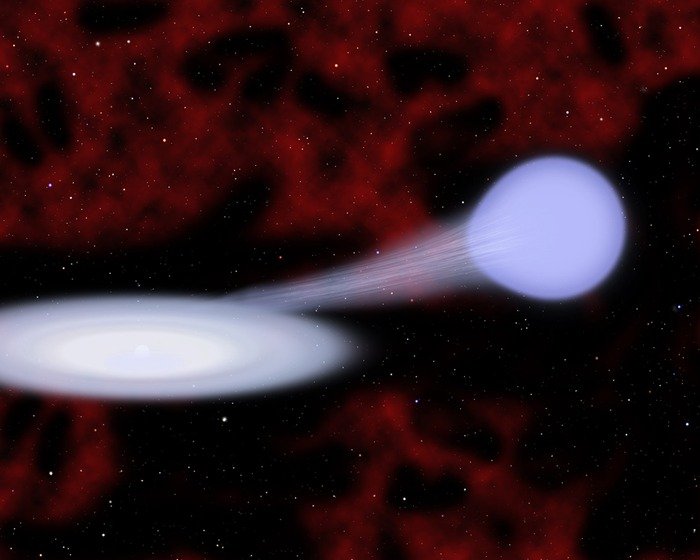This artist’s conception shows material from a hot, blue helium star at right funneling toward a carbon/oxygen white dwarf star at left, which is embedded in an accretion disk. In many cases the white dwarf survives the subsequent explosion. Credit: Christine Pulliam (CfA)
PASADENA, Calif., March 26 (UPI) -- U.S. astronomers say they've discovered a new class of supernovae that doesn't fit in the two previously known varieties of the cosmic phenomenon.
Astronomers have divided all supernova discovered previously into two types known as core-collapse and Type Ia; core-collapse supernovae are the explosion of a star about 10 to 100 times as massive as our sun, while Type Ia supernovae are the complete explosion of a tiny white dwarf.
Now scientists say they've spotted a different kind of supernova they've dubbed a Type Iax.
Fainter and less energetic than a Type Ia, they are thought to also be the result of the disruption of a white dwarf star but one that does not completely destroy it.
"A Type Iax supernova is essentially a mini supernova," lead study author Ryan Foley of the Harvard-Smithsonian Center for Astrophysics said. "It's the runt of the supernova litter."
The research team, including scientists at the Carnegie Institution in Pasadena, Calif., has identified 25 examples of the new type of supernova.
None of them appeared in elliptical galaxies filled with old stars, the researchers said, suggesting Type Iax supernovas come from young star systems.
Astronomers suspect a Type Iax supernova comes from a binary star system containing a white dwarf and a companion star that has lost its outer hydrogen, leaving it composed mostly of helium.
The white dwarf collects helium from the normal star until it explodes, but only partially, surviving the disruption unlike in a Type Ia supernova where the white dwarf is completely destroyed, astronomers suggest.
"The closer we look, the more ways we find for stars to explode," Carnegie researcher Mark Phillips said.















